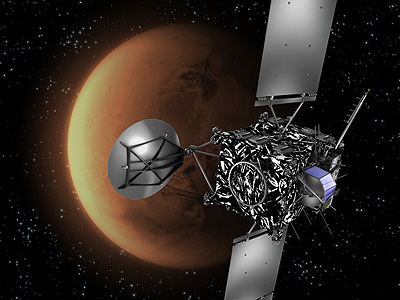The scientists hope to use the high resolution of the Rosetta cameras to photograph the phenomenon of the rings of Mars

The Rosetta spacecraft, which is making its way to a comet on which a lander will land in 2014, will come close to Mars on Saturday to gain momentum from its gravity and increase its speed. On its way, it will try to photograph the trail of dust spreading from the Martian moons Phobos and Deimos, with the same equipment that will be used to track the dust from the tail of comet 67P Churyumov-Gerasimenko.
Rosetta scientist Horst Hugh Keller said that several observations will be made on Mars from a distance of only 250 kilometers using high-resolution cameras and other sensitive instruments. The spacecraft will be at this distance from Mars on Saturday, February 24, 2007 at 18:00 GMT (20:00 Israel time). At this time she will photograph the moon Phobos appearing behind the planet. "We will observe the event through the atmosphere of Mars and we will be able to look for evidence of water," said Keller, the chief scientist of the Osiris instrument on Rosetta and a researcher in the field of the solar system at the Max Planck Institute.
The European Space Agency's website states that on Sunday morning, an event will be held at the European Space Agency's control center in Darmstadt, Germany, during which the images taken by Rosetta on Mars will be shown live for the first time.
The observation will last about two hours and following it a series of photographs of the disk will be taken which, according to Prof. Keller, will have a resolution 10 times better than what Hubble can achieve. The spacecraft will try to observe the trail of the thin ring that surrounds Mars and which scientists believe is made up of the dust emitted by the two Martian moons Phobos and Deimos, which orbit the star close to the surface. This ring is theoretically predicted and Hubble was very close to finding evidence of its existence. This is the second planetary encounter for Rosetta, which has already passed by Earth before to gain additional speed.
Rosetta's next pass by a planet is expected to be on November 13, and again it will be Earth.

2 תגובות
To Avi Bilovski, when will the images of Mars be uploaded to the European website